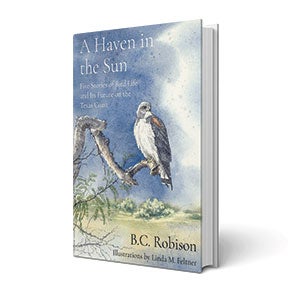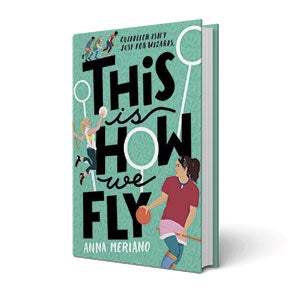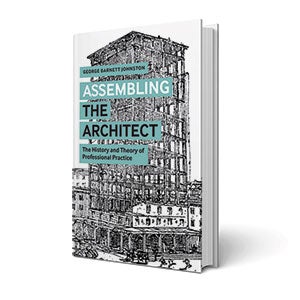Now Reading: Alumni Books
 A Haven in the Sun
A Haven in the Sun
Five Stories of Bird Life and Its Future on the Texas Coast
B.C. Robison ’88
Texas Tech University Press, 2020
More than 480 species of birds spend at least some of their days in coastal Texas as permanent residents or as seasonal guests. In “A Haven in the Sun,” nature writer B.C. Robison focuses on five species with especially close ties to the region: Attwater’s prairie chicken, white-tailed hawks, whooping cranes, redheads, and migratory shorebirds and songbirds. With its varied habitats and geographic centrality, the Texas coast is a crossroads — and a true haven — for birds of all kinds, Robison writes.
As the coast becomes more crowded and habitats degrade and disappear, however, the region has less in the way of shelter and sustenance to offer its feathered visitors. Take the Hudsonian Godwit, a shorebird that makes a 2,000-mile trek over the open Atlantic every summer, from Canada to the Amazon rainforest, before continuing to its winter home in southern Chile and Tierra del Fuego. In the spring, the birds begin the return trip north, stopping over in rice fields and pastures along the Texas coast. But habitat destruction threatens their dwindling population at every stage of their journey, including the Texas rest stop. “What happens to the Hudsonian Godwit may also be the fate of other shorebirds,” Robison warns.
 This Is How We Fly
This Is How We Fly
Anna Meriano ’13
Philomel Books, 2020
Ellen Lopez-Rourke — the 17-year-old narrator of Anna Meriano’s young adult novel “This Is How We Fly” — lost her mother when she was only 4 years old and ended up with a wicked stepmother instead. That made her feel a bit like a Disney princess, and she became preoccupied with fairy tales. “I liked the story that every fairy tale tells,” Ellen says. “That the world is full of danger, which I already knew, and that happy endings exist, which I wanted to believe. They also give stepmothers a pretty bad rap.” When the villain in Ellen’s tale grounds her for a month during her last summer before college, her only way out of the house is to join the local “Muggle” Quidditch team. And although the magic they use on the field is only pretend, the experience opens up a whole new world to her.
Meriano, who plays for the Houston Cosmos Quidditch Club, has created a playful, funny and poignant take on the classic Cinderella story, which critics have lauded. “This clever, subtle reimagining of a beloved fairy tale is both subversive and empowering,” Kirkus Reviews says. “Truly enchanting.”
 Assembling the Architect
Assembling the Architect
The History and Theory of Professional Practice
George Barnett Johnston ’84
Bloomsbury Visual Arts, 2020
Architecture has existed for millennia, since humans first moved out of caves and started building structures. But the role of an architect as we conceive of it today is relatively new. In “Assembling the Architect,” George Barnett Johnston maps the profession’s evolution in the U.S., focusing on its foundations from 1870 to 1920.
Back then, the defining traits of the role were just beginning to take shape as architects jockeyed for social status and professional prestige. Industry regulation was virtually nonexistent; and relations between architects, builders and owners were confusing and often contentious. “The role of the general contractor was still a novelty, general conditions of contracts were inconsistent, competitive bidding was decried as an evil, local customs frustrated consensus about national norms, and the agency of the architect was unsettled law,” writes Johnston, an architecture professor at Georgia Tech and principal of Johnston+Dumais [architects]. And while the role continues to evolve today, Johnston hopes that a measure of historical awareness will help the profession avoid some of the pitfalls of the past.
